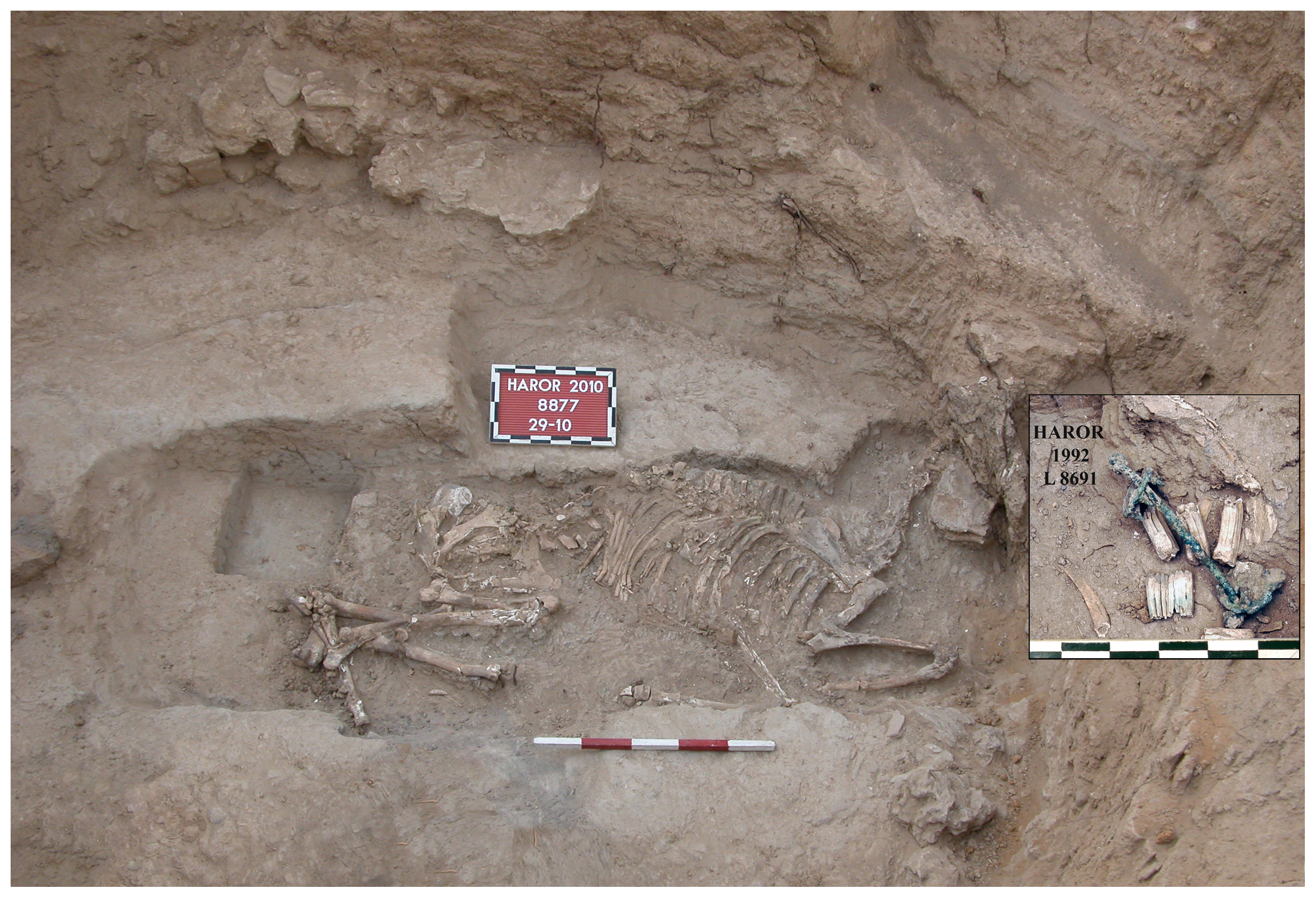Dressed-Up Donkey Discovered at Religious Burial Site
Even in bygone eras, domestic animals were essential for the development of human civilization. Aside from their use as a primary food source, animals served as companions, hunters, protectors, and workers. However, they also participated in rituals and religious ceremonies, sometimes even deserving their own burials (animal mummies!). By analyzing the remains at discovered animal burial sites, archaeologists can learn a lot about human society during a specific era.
In a recently published PLOS ONE paper titled “Symbolic Metal Bit and Saddlebag Fastenings in a Middle Bronze Age Donkey Burial,” researchers describe the unprecedented discovery of a ritualized donkey burial, where the donkey had both a metal horse bit in its mouth and saddlebag fastenings on its back. Researchers determined that the donkey was carefully placed in the particular position, with limbs bent, as shown above, evidence of a purposeful burial. This specimen was dated to the Middle Bronze Age III (that’s roughly 1700/1650-1550 BCE) and found in a religious precinct at Tel Haror, an archaeological site in Israel.
This find is exciting because it indicates early use of harnessing/bridling equipment and a significant technological advance over using neck ropes, rings, or nose bands for steering pack animals. Through different types of analysis, the researchers shed light on the functional and symbolic roles of the donkey. Most notably, it appears that the burial and tacking were largely symbolic (nonfunctional) and part of a ceremonial ritual, which may have been followed by a feast involving other animals, whose bones were found nearby.
The researchers reached this conclusion based on a few key pieces of evidence. Dental analysis revealed that the donkey was sacrificed at a young age, about four years old. No wearing was evident on the teeth, meaning that it was probably never trained as a draught animal. In addition, the metal horse bit seems to have been pieced together, defective, and missing any adjoining bridle components when it was placed in the donkey’s mouth, suggesting that it would not have been used for actual labor. Finally, the saddlebags were smaller than usual; the researchers suspect that they were made specifically for the burial.
Understanding how humans utilized equid pack animals, especially donkeys, is important for identifying social, economic, and technological developments during earlier eras. In this case, it seems that the donkey’s role was largely one of high symbolic value, rather than functional, which may be related to the high social status that was attached to owning and riding donkeys at the time.
Citation and Images:
Bar-Oz G, Nahshoni P, Motro H, Oren ED (2013) Symbolic Metal Bit and Saddlebag Fastenings in a Middle Bronze Age Donkey Burial. PLoS ONE 8(3): e58648. doi:10.1371/journal.pone.0058648


